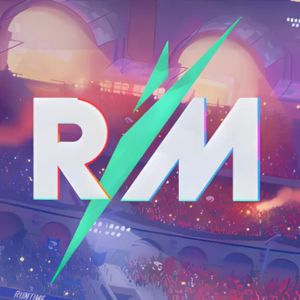DOOM: The Dark Ages Review – A Brutal Medieval Twist on a Classic FPS
DOOM: The Dark Ages Review introduces a darker, grounded vision for the iconic shooter series. Released on May 15, 2025, by id Software and Bethesda Softworks, this bold prequel shifts away from the acrobatic chaos of DOOM Eternal. Instead, it delivers a heavier, more strategic experience in a medieval-inspired setting. With three million players in its first week and a 96 percent recommendation rate on OpenCritic, the game has already made a powerful impact. This review explores what sets this new chapter apart, from its development and mechanics to its visuals and reception.
Origins and Development of DOOM: The Dark Ages
After DOOM Eternal and its expansions concluded in 2020, id Software began planning the next evolution of the franchise. In 2021, they initiated concept work for a prequel that would explore the Doom Slayer’s earliest days. Game Director Hugo Martin wanted to expand the mythos hinted at in Eternal, particularly the era of the Night Sentinels and Argent D’Nur. Development officially began in 2022.
The project was briefly known under the codename DOOM Year Zero, which appeared in leaked Microsoft documents in 2023. Fans speculated heavily about a medieval Doom setting, and their theories were confirmed when the game was revealed during the Xbox Games Showcase in June 2024. Despite being a Microsoft-owned property, DOOM: The Dark Ages launched on PlayStation 5, Xbox Series X/S, and PC, continuing the series' tradition of wide accessibility.
DOOM: The Dark Ages Review A New Approach to Combat
Unlike its predecessors, DOOM: The Dark Ages slows the pace and emphasizes weight over speed. Players no longer leap from ledge to ledge or dash through arenas. Instead, they adopt the role of a tank-like warrior who stands their ground.
The centerpiece of this new style is the Shield Saw, a versatile tool used for parrying, blocking, and attacking. Red enemy attacks can be blocked, while green projectiles are deflected and countered. This new system adds a level of timing and precision to combat, rewarding players for mastering parries rather than relying on pure reflexes.
Combat is further enriched with new weapons, such as the Skull Crusher, which launches bone fragments, and medieval melee tools like a mace and flail. The game also introduces large-scale sequences where the Slayer pilots a towering mech or rides a cybernetic dragon, adding dramatic variety to the action.
Visuals and Audio Design
DOOM: The Dark Ages is powered by the idTech 8 engine, which brings a significant leap in graphical fidelity. The game runs at a smooth 60 frames per second across all platforms and features ray-traced lighting for realistic reflections and shadows. Environments range from ruined castles and decayed forests to cosmic realms inspired by Lovecraftian horror. The art direction leans heavily into dark fantasy, offering a unique tone compared to the sci-fi focus of previous games.
While the overall presentation is strong, some players noted that environmental textures such as trees and foliage lacked the polish expected from next-gen titles. Nevertheless, ray tracing and particle effects help create a rich atmosphere.
The audio design supports this visual intensity with a new soundtrack composed by Finishing Move. The music blends medieval instruments with aggressive industrial beats, reflecting the hybrid tone of the game. DualSense support on the PlayStation 5 enhances immersion through haptic feedback, particularly during dragon and mech sequences. At launch, there were minor audio sync issues, but these were addressed in a timely patch.
A Cinematic Story of Origins
Narrative plays a larger role in DOOM: The Dark Ages than in past titles. The story explores the Doom Slayer’s transformation from enslaved warrior to the chosen champion of the Night Sentinels. Set before the events of DOOM 2016, the plot reveals more about the Maykrs and their obsession with harnessing the Heart of Argent. Themes of vengeance, power, and divine manipulation unfold through cutscenes and in-game lore entries.
The game draws inspiration from character-driven stories like Batman Year One. The result is a more grounded and emotional take on the Slayer's origins, without sacrificing the franchise’s brutal identity. For the first time, the Slayer fights alongside friendly NPCs, adding a new layer to worldbuilding and immersion.
Reception and Community Response
Upon release, DOOM: The Dark Ages received strong reviews across major outlets. IGN praised its combat design and shield mechanics, calling it the most strategic Doom entry yet. GameSpot commended the balance between lore and gameplay. Most players appreciated the shift in tone and pacing, though some missed the high-speed intensity of DOOM Eternal.
On social platforms like Reddit and X, players shared clips of dragon-riding and mech fights, while others debated the game’s place in the Doom timeline. The community generally welcomed the grounded combat and cinematic storytelling, but there were consistent requests for visual texture improvements and expanded post-launch support.
Technical Performance and Updates
The game launched with demanding system requirements, including an AMD Zen 2 or Intel 10th Gen processor and an 8GB VRAM GPU. Some users with newer Intel CPUs experienced crashes, and ray tracing performance on mid-range cards was inconsistent. These issues were addressed in the June 2025 hotfix, which improved stability and adjusted texture filtering.
Post-launch updates have already improved parry timing, rebalanced enemy health drops, and fixed minor bugs. Further enhancements, including path tracing support and DLC expansions, are expected later in the year.
Final Thoughts on DOOM: The Dark Ages Review
DOOM: The Dark Ages Review highlights a confident evolution for the franchise. By embracing grounded melee combat and deepening the Slayer's lore, the game sets itself apart from its high-speed predecessors. The visuals are striking, the sound design is immersive, and the story adds emotional weight without overshadowing the gameplay. While technical issues and the lack of multiplayer hold it back slightly, the game’s strengths make it a must-play for longtime fans and newcomers alike. This is a medieval massacre worthy of the Doom name.
































